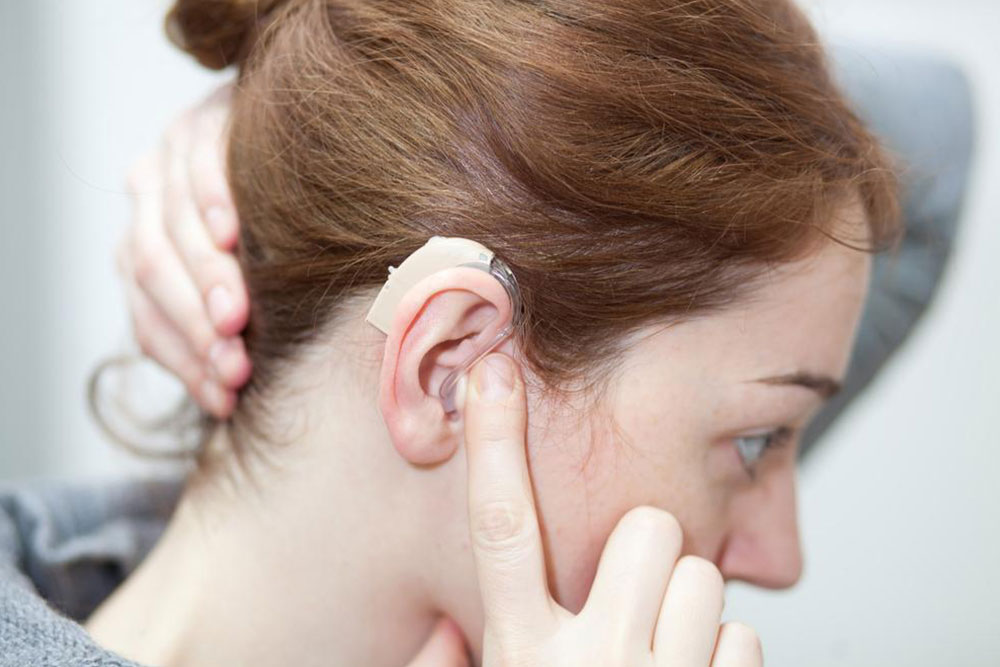Comprehensive Guide to Different Types of Hearing Loss and Effective Management Strategies
This comprehensive guide explains the different types of hearing loss—sensorineural, conductive, and mixed—and provides practical advice on diagnosis, treatment options, and prevention strategies. Whether you're experiencing early symptoms or seeking to understand hearing health better, this article offers valuable insights for improving your quality of life through effective management and use of advanced hearing aids.

Understanding Different Types of Hearing Loss and How to Address Them
Hearing impairment is a common condition that can significantly affect a person's quality of life. Identifying the specific type of hearing loss is essential for determining the most effective treatment approach. Whether you're experiencing early symptoms or have concerns about your hearing health, recognizing the underlying cause helps you and your healthcare provider develop a tailored management plan. While audiologists and hearing specialists are vital in diagnosing and treating hearing issues, having a basic understanding of the different types of hearing loss empowers patients to participate actively in their treatment decisions.
If you notice symptoms such as difficulty understanding speech, muffled hearing, or ear discomfort, it is crucial to seek prompt medical evaluation. Early diagnosis can prevent further deterioration and improve treatment outcomes.
Primary Types of Hearing Loss and Their Characteristics
There are three main categories of hearing impairment that are commonly recognized by healthcare professionals: sensorineural, conductive, and mixed hearing loss. Each type has distinct causes, effects, and treatment options, making it important to understand their differences.
Sensorineural Hearing Loss: The Most Common and Often Permanent
Sensorineural hearing loss is the most prevalent form of hearing impairment, accounting for approximately 90% of all cases. It occurs when there is damage to the inner ear’s delicate hair cells or the auditory nerve pathways that transmit sound signals from the ear to the brain. This type of hearing loss is typically permanent because the damage to these nerves or hair cells cannot be reversed.
The primary causes of sensorineural hearing loss include age-related degeneration (presbycusis), prolonged exposure to loud noises, genetic factors, certain illnesses like meningitis, Meniere’s disease, and exposure to ototoxic medications. Trauma or injury to the head can also contribute significantly to this condition.
Individuals with sensorineural hearing loss often experience difficulty hearing high-frequency sounds, understanding speech in noisy environments, and may have trouble distinguishing between similar sounds. Despite its permanence, modern hearing aids and digital hearing devices can greatly improve quality of life by amplifying sounds and clarifying speech.
It is recommended to seek consultation from audiologists who can evaluate the severity of the loss and recommend appropriate devices such as behind-the-ear (BTE), in-the-ear (ITE), or cochlear implants for more severe cases.
Conductive Hearing Loss: Blockages and Structural Issues
Conductive hearing loss stems from issues in the outer or middle ear that hinder sound transmission to the inner ear. Unlike sensorineural loss, conductive impairment is often temporary or treatable, making early intervention highly effective.
Common causes include excess earwax buildup, ear infections like swimmer’s ear, otoacoustic infections, fluid accumulation due to allergies or colds, trauma resulting from physical injury, or abnormal bony growths such as Otosclerosis — a condition where abnormal bone develops around the middle ear structures, leading to stiffening and impaired movement of ossicles.
People with conductive hearing loss might experience a feeling of fullness in the ear, muffled sound, or reduced loudness. These issues can often be corrected through medical procedures such as earwax removal, antibiotics for infections, or surgical interventions to repair damaged structures. Hearing aids may also be recommended to amplify sounds once the underlying problem is addressed.
Mixed Hearing Loss: The Combination of Sensorineural and Conductive Factors
Mixed hearing loss involves a combination of both sensorineural and conductive components. This complex condition indicates damage in the inner ear or auditory nerve, along with issues in the outer or middle ear.
Patients with mixed hearing loss typically experience symptoms associated with both types, such as muffled hearing, difficulty understanding speech, and full or blocked feeling in the ears. Treatment plans must be individualized, combining medical interventions (like surgery or medication) to address conductive issues, and amplification devices or cochlear implants to compensate for sensorineural damage.
Managing mixed hearing loss requires collaboration between audiologists, otolaryngologists, and speech therapists to optimize hearing ability and improve communication effectively.
Choosing the Right Treatment and Devices for Hearing Loss
Once the specific type of hearing loss has been diagnosed, the next step involves discussing suitable treatment options with healthcare professionals. The goal is to restore or improve hearing capacity, enhance communication, and prevent further deterioration.
For sensorineural hearing loss, digital hearing aids equipped with noise reduction, directional microphones, and connectivity features are highly recommended. Leading brands include Oticon, Resound, Phonak, Unitron, and Signia, known for their technological advancements and durability.
In cases of conductive loss where structural issues are identified, medical or surgical solutions are often the first line of treatment. If surgical options are not viable or partial recovery is achieved, hearing aids can serve as a complementary device to enhance hearing.
It is vital to choose high-quality hearing aids from reputable manufacturers. These devices should fit comfortably, be easy to operate, and include features relevant to your lifestyle, such as Bluetooth connectivity, rechargeability, and specialized programs for different listening environments.
Regular follow-up appointments with audiologists are essential to fine-tune devices, monitor progress, and adapt treatment plans as needed.
Preventing Hearing Loss and Maintaining Ear Health
Prevention plays a key role in managing hearing health. Avoid exposure to loud noises by using ear protection such as earplugs or earmuffs in noisy environments like concerts, construction sites, or during firearm use. Maintaining good ear hygiene and seeking prompt treatment for ear infections can prevent conductive damage.
Limit the use of ototoxic medications when possible, and manage chronic health conditions that could affect the ears, such as diabetes or high blood pressure. Regular hearing check-ups are advisable, especially for individuals in high-risk groups or ages above 50.
Adopting healthy lifestyle habits, such as adequate nutrition, regular exercise, and avoiding smoking, can also help preserve hearing function over time.
Summary and Final Tips
Understanding the different types of hearing loss—sensorineural, conductive, and mixed—is fundamental in choosing the right treatment and maintaining optimal ear health. Early diagnosis and intervention can significantly improve outcomes and quality of life. Whether it’s using high-quality hearing aids, undergoing surgery, or adopting preventive measures, proactive steps are essential for effective management.
If you suspect hearing issues, consult a qualified audiologist or healthcare provider promptly. With advances in hearing technology and medical treatments, individuals with hearing loss have access to a range of solutions that can help restore clarity in communication and improve everyday interactions.





